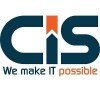Filter interviews by
Ellucian Higher Education Systems Cloud Engineer 2 Interview Questions and Answers
Ellucian Higher Education Systems Cloud Engineer 2 Interview Experiences
1 interview found
(1 Question)
- Q1. AWS Technology and database stuffs
(2 Questions)
- Q1. AWS technology and database stuffs
- Q2. Oracle dba questions
Top trending discussions






Interview questions from similar companies

Software Engineer Interview Questions & Answers
Altair Engineeringposted on 31 Aug 2015
Interview Questionnaire
6 Questions
- Q1. Tell something about yourself
- Ans.
I am a software engineer with 5 years of experience in developing web applications using Java and JavaScript.
I have a Bachelor's degree in Computer Science.
I am proficient in Spring Framework and AngularJS.
I have worked on projects involving RESTful APIs and microservices architecture.
I am a quick learner and enjoy working in a team environment.
- Q2. Why do you want to join this company?
- Ans.
I am impressed with the company's innovative approach and commitment to excellence.
I have researched the company and its products extensively and am excited about the potential for growth and development.
I am impressed with the company's reputation for innovation and cutting-edge technology.
I believe that the company's commitment to excellence aligns with my own values and goals.
I am excited about the opportunity to wo...
- Q3. What are your future plans?
- Ans.
My future plans include continuous learning, honing my skills, and contributing to the growth of the company.
I plan to attend relevant conferences and workshops to stay updated with the latest technologies.
I want to work on challenging projects that will help me improve my skills.
I aim to become a valuable asset to the company by contributing to its growth and success.
I plan to mentor and guide junior developers to hel
- Q4. Mathematics
- Q5. Programming
- Q6. Logic
Interview Preparation Tips
Experience: It was a bit lengthy and I wasn't able to solve all the questions, but the rest was accurately completed by me.
Tips: One needs to know basic programming and logic. The rest is doable. Pay attention to time and the accuracy of your answers.
Duration: 120 minutes
Total Questions: 50
Round: Group Discussion
Experience: A few points were given to us and we had to proceed from there. I gave new ideas as well as new points of view on the already presented ideas. I also encouraged others to participate.
Tips: Don't be too quiet/passive or too loud/active. Let others also talk and don't talk about the same points again & again.
Duration: 15 minutes
Round: HR Interview
Experience: It was a good interview. I felt at ease and myself while talking about me. The CTO of the company was conducting it.
Tips: See the direction in which the interview is going and frame your answers accordingly. Tell them what they want to hear, but don't lie.
Round: Technical Interview
Experience: It was a telephonic interview, and the HR team present there was guiding me through it. The questions were easy.
Tips: Be confident while answering the questions. Don't think too much on it, and answer appropriately. Be clear and concise.
General Tips: As I said earlier as well, be yourself and be confident.
Skill Tips: Be adequately prepared on what you prepare for; know the ins and outs of the company you are sitting in for; be confident and clear on what you speak.
Skills: Programming, Logic Building, Common Aptitude, Personality
College Name: IIT Bombay
Motivation: I wanted to do programming which was also in the engineering domain. Hence Altair came as the perfect fit for me.
Funny Moments: I was not able to listen properly to the telephonic interview, but the CTO was impressed with me in the HR interview so he happily guided me through. I also found out that one of the seniors interviewing me was from the same place as that of mine, so we had a small discussion there as well. I felt at ease hence.

Software Engineer Interview Questions & Answers
Altair Engineeringposted on 10 Mar 2015
Interview Preparation Tips
Experience: My experience with IITB racing for more than 2 years helped me with this process. Additionally, my work as an electronic differential engineer which required development of a detailed vehicle model was more closer to the
College Name: IIT BOMBAY

Interview Preparation Tips
Tips: Screening test is done online and contains objective questions..
Total Questions: Online
Round: Group Discussion
Experience: Shortlisted candidates were divided in groups of 9-10 students for group discussion. GD lasted for about 40 min.
Duration: 40 minutes
Round: Interview
Experience: Technical interview was of about 35 min. There was no hr interview. Questions were related to the projects that the candidate performed during his stay at IIT Roorkee. Two puzzles were also asked. Other questions were based on the answers that the candidate gave to the previous questions.
General Tips: This company looks for people with strong technical aptitude. So do not shy from showing all your projects. In other companies too many projects may lead them to believe that you are more interested in pursuing research and will leave the company soon. This may have a negative effect on other companies. But at Altair it is good to show all your projects, your research publications, any additional courses taken. Along with your technical projects it will be good if you could show them your coding ability. They are looking for technical people with a stint for coding.
College Name: IIT ROORKEE
Motivation: Altair deals with engineering services, product design, and engineering finite element software development (eg. hypermesh, hypermath, etc). The profile for which it takes the new recruits is for engineering software code writer.

Interview Preparation Tips
Experience: Written Test – 50 ppl appeared 15 were shortlisted for interview, 3 were finally selected. Technical interview mainly based on project and the basics of the subject HR – be pleasing If someone wants to appear for this company. .
Tips: Prepare some common topics such as globalization, reservation in IITs and IIMs, etc.
General Tips: Never let them ask you the points in which you are weak& Always lead the interviewer to the questions that you are expecting.
College Name: IIT BOMBAY

I applied via Campus Placement and was interviewed before Apr 2020. There were 5 interview rounds.
Interview Questionnaire
2 Questions
- Q1. 1.OOP questions
- Q2. 2.Java basic programs
Interview Preparation Tips
Try to answer questions logically

I applied via Naukri.com and was interviewed before Sep 2020. There were 3 interview rounds.
Interview Questionnaire
1 Question
- Q1. Problem solving and string processing
Interview Preparation Tips


(2 Questions)
- Q1. OOPS cocept,mvc,core,api
- Q2. Oops concept,mvc,core,api
(1 Question)
- Q1. Oops concept,mvc,web api,project description
Interview Preparation Tips

I appeared for an interview before Mar 2024, where I was asked the following questions.
- Q1. Explain the Lifecycle of MVC and the deployment process.
- Ans.
MVC lifecycle involves Model, View, and Controller interactions, while deployment ensures the application is live and accessible.
1. Model: Represents data and business logic. Example: A User model that interacts with a database.
2. View: Displays data to the user. Example: HTML templates rendering user information.
3. Controller: Handles user input and updates the model. Example: A login controller processing user creden...
- Q2. What is CTE and syntax of same ?
- Ans.
CTE stands for Common Table Expression, a temporary result set in SQL used for complex queries.
CTE is defined using the WITH clause.
It can be recursive or non-recursive.
Example syntax: WITH CTE_Name AS (SELECT column1 FROM table) SELECT * FROM CTE_Name;
CTEs improve readability and organization of SQL queries.
They can be referenced multiple times within a query.
- Q3. What is CORS (Cross Origin Resource Sharing) ?
- Ans.
CORS is a security feature that allows restricted resources on a web page to be requested from another domain outside the domain from which the resource originated.
CORS is implemented via HTTP headers that allow servers to specify who can access their resources.
For example, a web application on 'example.com' can request resources from 'api.example.com' if CORS is enabled.
The 'Access-Control-Allow-Origin' header is cruc...
- Q4. What is Bundling and Minification ?
- Ans.
Bundling and minification optimize web assets by reducing file size and number of requests, improving load times and performance.
Bundling combines multiple files (e.g., JavaScript, CSS) into a single file to reduce HTTP requests.
Minification removes unnecessary characters (like whitespace and comments) from code to decrease file size.
Example of bundling: Combining 'script1.js', 'script2.js', and 'script3.js' into 'bund...
- Q5. What is HTML helper ?
- Ans.
HTML helpers are functions that simplify the generation of HTML markup in web applications, enhancing code readability and maintainability.
HTML helpers are often used in MVC frameworks to generate HTML elements easily.
Common HTML helpers include methods for creating forms, links, and other UI components.
Example: In ASP.NET MVC, Html.TextBoxFor() generates an input element for a model property.
HTML helpers promote DRY (...

(2 Questions)
- Q1. What are features of OOPS
- Ans.
OOPS features include encapsulation, inheritance, polymorphism, and abstraction.
Encapsulation: Bundling data and methods that operate on the data into a single unit (class).
Inheritance: Ability to create new classes based on existing classes, inheriting their attributes and methods.
Polymorphism: Ability to use a single interface for different data types or classes.
Abstraction: Hiding the implementation details and show
- Q2. Difference between interface and abstract clas
- Ans.
Interface is a contract that defines the methods a class must implement, while abstract class can have both implemented and abstract methods.
Interface methods are public and abstract by default, while abstract class can have abstract and non-abstract methods.
A class can implement multiple interfaces but can only inherit from one abstract class.
Interfaces are used for full abstraction, while abstract classes are used fo...
Ellucian Higher Education Systems Interview FAQs
Tell us how to improve this page.
Ellucian Higher Education Systems Interviews By Designations
- Ellucian Higher Education Systems Software Engineer2 Interview Questions
- Ellucian Higher Education Systems Intern Interview Questions
- Ellucian Higher Education Systems Software Engineer Interview Questions
- Ellucian Higher Education Systems Softwaretest Engineer Interview Questions
- Ellucian Higher Education Systems R&D Engineer Interview Questions
- Ellucian Higher Education Systems Software Tester Interview Questions
- Ellucian Higher Education Systems Associate Consultant Interview Questions
- Ellucian Higher Education Systems Network Engineer Interview Questions
- Show more
Interview Questions for Popular Designations
- Cloud Engineer Interview Questions
- AWS Cloud Engineer Interview Questions
- Senior Cloud Engineer Interview Questions
- Cloud Support Engineer Interview Questions
- Cloud Consultant Interview Questions
- Cloud Devops Engineer Interview Questions
- Cloud Operations Engineer Interview Questions
- Cloud Engineer 1 Interview Questions
- Show more
Ellucian Higher Education Systems Cloud Engineer 2 Interview Process
based on 1 interview
Interview experience
Interview Questions from Similar Companies
Fast track your campus placements

Ellucian Higher Education Systems Cloud Engineer 2 Reviews and Ratings
based on 1 review
Rating in categories
|
Cloud Engineer
85
salaries
| ₹6 L/yr - ₹25 L/yr |
|
Software Developer
75
salaries
| ₹6.7 L/yr - ₹16 L/yr |
|
Senior Software Developer
48
salaries
| ₹10.3 L/yr - ₹19.5 L/yr |
|
Software Engineer
44
salaries
| ₹7.5 L/yr - ₹13.8 L/yr |
|
Software Engineer2
39
salaries
| ₹11 L/yr - ₹15 L/yr |

Softenger

Foray Software

Nelito System

Black Knight
- Home >
- Interviews >
- Ellucian Higher Education Systems Interview Questions >
- Ellucian Higher Education Systems Cloud Engineer 2 Interview Questions
















